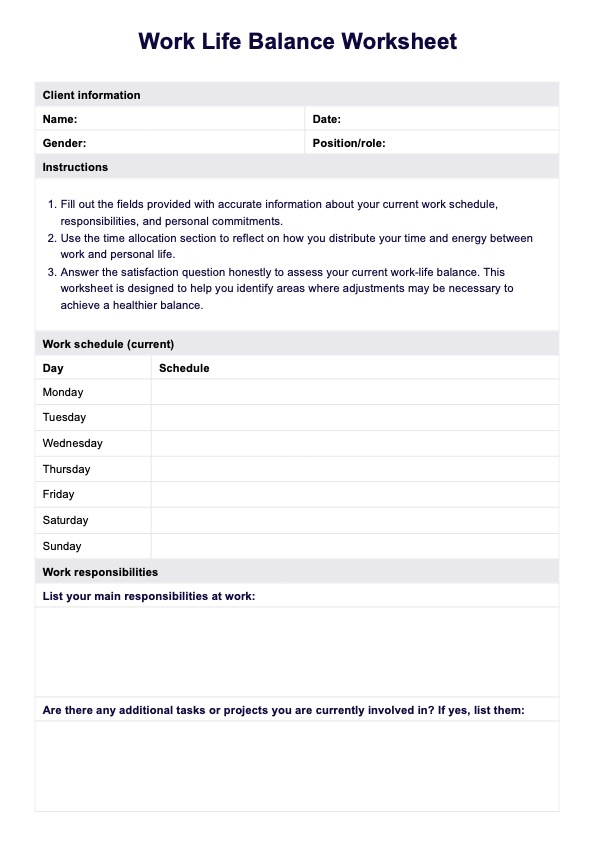A poor work-life balance can lead to increased stress, burnout, and decreased productivity.

Work-Life Balance Worksheet
Help clients to enhance productivity and achieve work and personal life harmony with our Work-Life Balance Worksheet.
Use Template
Work-Life Balance Worksheet Template
Commonly asked questions
To improve work-life balance, one can focus on prioritizing tasks, setting boundaries, and practicing self-care to enhance their overall well-being.
While perfection may not be attainable, making minor adjustments and finding harmony between work and personal life is achievable and beneficial.
EHR and practice management software
Get started for free
*No credit card required
Free
$0/usd
Unlimited clients
Telehealth
1GB of storage
Client portal text
Automated billing and online payments











